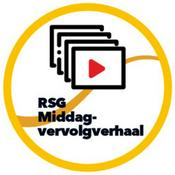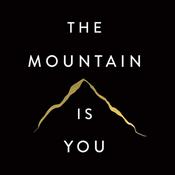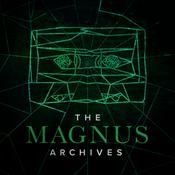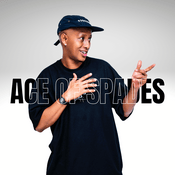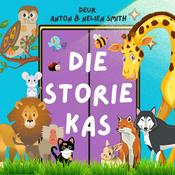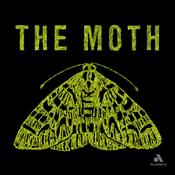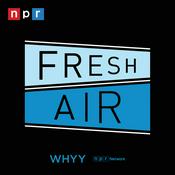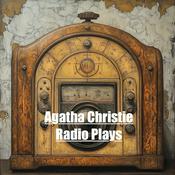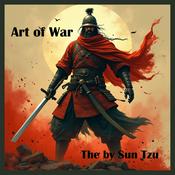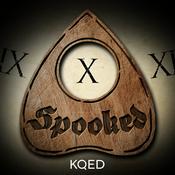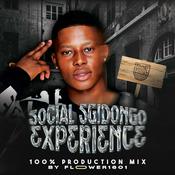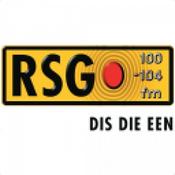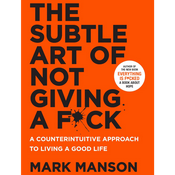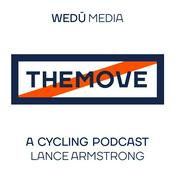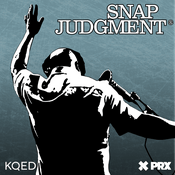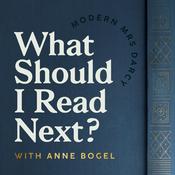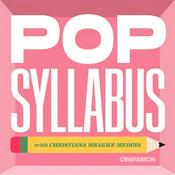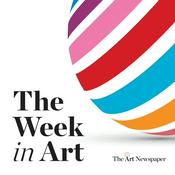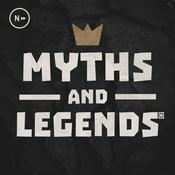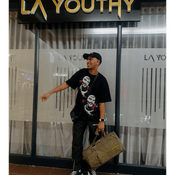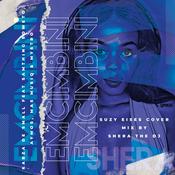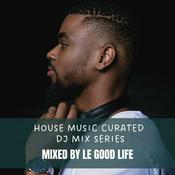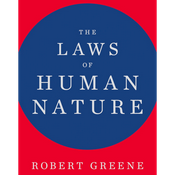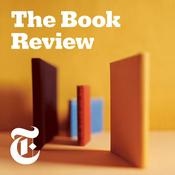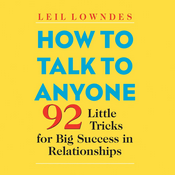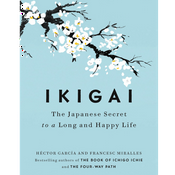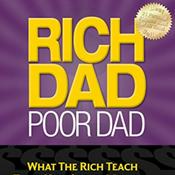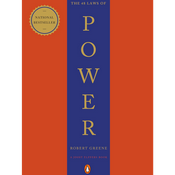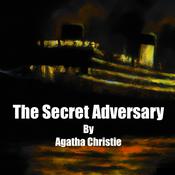372 episodes
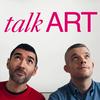
Alison Goldfrapp
2025/12/22 | 1h
It’s the Talk Art Christmas special! We meet Alison Goldfrapp, the creative force behind some of the most captivating music of the past two and a half decades!!! We celebrate Alison’s new reinterpretation of David Bowie’s Heroes which she has just released with Lorne Balfe for The War Between The Land and The Sea soundtrack, the new TV series starting our very own Russell Tovey.Having set a towering bar for synth-pop in the 21st century, Alison Goldfrapp– the magnetic British songwriter, vocalist, performer & producer – is recognised for approaching each iteration of her stellar career from an innovative new position. With the release of Alison's debut solo album The Love Invention — an electrifying dance-pop suite — her multi-faceted musicianship reaches a new peak. “It feels like a new time, and a new era,” Alison says decisively.The momentum towards her journey into solo music was solidified back in 2021, when she was collabored with Röyksopp on the shimmering track “Impossible”. This led to Alison signing with legendary Skint Records and recording 'The Love Invention' which marks Alison’s reawakening as a dancefloor priestess, featuring an intoxicating showcase of the disco and house influences that have always been at the heart of her musical DNA.Alison's previous seven albums with Goldfrapp were fuelled by an unfailing modernity & a sixth sense for sounds that were more timeless than any trend. The band's 1999 debut album 'Felt Mountain' was nominated for a Mercury Prize and over their career they produced 3 #1 US dance singles & received multiple Grammy nominations incl. Best Electronic/Dance Album. The multi-platinum selling band have won prestigious awards including 2 Ivor Novellos, ASCAP/PRS, Music Week, MTV Europe and Music Producers Guild award. They were also nominated for two BRITs and a Mercury.Follow @Alison_Goldfrapp and @GoldfrappMusic.Alison’s new album FLUX is out now. Watch @TheWarBetweenTV now on BBC iplayer. Hosted on Acast. See acast.com/privacy for more information.

Barbara Dawson (Francis Bacon Studio at Hugh Lane Gallery)
2025/12/19 | 1h 2 mins.
Russell & Robert meet Barbara Dawson for a behind the scenes visit to Francis Bacon’s Studio, installed in Dublin’s iconic Hugh Lane Gallery. The gallery is currently closed to the public for major renovations so we thought it would be a great opportunity to bring the studio and galleries to life with this exclusive audio tour, while closed to public.A visit to Francis Bacon’s Studio at Hugh Lane Gallery gives a unique opportunity to experience the working process of one of the twentieth century’s greatest artists.Born in Dublin in 1909, Bacon grew up in county Kildare. He left home at the age of sixteen and eventually settled in London where he established himself as one of the leading international artists of his generation. Bacon moved into 7 Reece Mews, London, in 1961 where he lived and worked until his death in 1992 (in Madrid).We also loved seeing photographer Perry Ogden's iconic documentation of artist Francis Bacon's chaotic studio at 7 Reece Mews, London. In 1998, director Barbara Dawson secured the donation of Francis Bacon’s studio from the artist’s heir, John Edwards, and Brian Clarke, executor of the Estate of Francis Bacon. Her vision was to remove the entire studio including all of the items without exception, as well as the architectural features, and relocate the studio as it was, to the Hugh Lane Gallery.In the August of that year, as project manager, she assembled a team of conservators, curators, and archaeologists to carry out the move. The archaeologists made survey and elevation drawings of the small studio, mapping out the spaces and locations of all the objects, while the conservators prepared the works for travel and curators tagged and packed each of the items, including the dust. The walls, doors floor and ceiling were also removed.Barbara Dawson is an Irish art historian, gallery director, curator and author. She has curated numerous significant exhibitions including retrospectives by notable artists including Francis Bacon, 2009. Dawson is the first female director of the Hugh Lane Gallery, a municipal art space and "the first known public gallery of modern art in the world" in Dublin. She has been the gallery's director since 1991.Follow @TheHughLane and visit: https://hughlane.ie/arts_artists/francis-bacons-studio/ Hosted on Acast. See acast.com/privacy for more information.

Isabel Nolan (Live at Dublin Gallery Weekend)
2025/12/12 | 1h 4 mins.
We are delighted to announce the first ever Irish episode of Russell Tovey and Robert Diament’s acclaimed Talk Art podcast, recorded live at the National Gallery of Ireland Lecture Theatre on Saturday November 8th for Dublin Gallery Weekend 2025.Isabel Nolan, Ireland’s representative at the 2026 Venice Biennale, has an expansive practice that incorporates sculptures, paintings, textile works, photographs, writing and works on paper. Her subject matter is similarly comprehensive, taking in cosmological phenomena, religious reliquaries, Greco-Roman sculptures and literary/historical figures, examining the behaviour of humans and animals alike.These diverse artistic investigations are driven by intensive research, but the end result is always deeply personal and subjective. Exploring the “intimacy of materiality”, Nolan’s work ranges from the architectural – steel sculptures that frame or obstruct our path – to small handmade objects in clay, hand-tufted wool rugs illuminated with striking cosmic imagery, to drawings and paintings using humble gouache or colouring pencils. In concert, they feel equally enchanted by and afraid of the world around us, expressing humanity’s fear of mortality and deep need for connection as well as its startling achievements in art and thought.Driven by “the calamity, the weirdness, horror, brevity and wonder of existing alongside billions of other preoccupied humans”, her works give generous form to fundamental questions about the ways the chaos of the world is made beautiful or given meaning through human activity.In 2026, Nolan will represent Ireland at the 61st Venice Biennale, with Georgina Jackson and The Douglas Hyde Gallery of Contemporary Art as the curator and Cian O’Brien as producer. In 2025, Nolan participated in the 13th Liverpool Biennial, Bedrock, curated by Marie-Anne McQuay. Isabel Nolan lives and works in Dublin.Follow @NolanIsabel and @KerlinGallery.Thank you @DublinGalleryWeekend, we loved visiting! We can’t wait to return to beautiful Ireland. Hosted on Acast. See acast.com/privacy for more information.

Marco Falcioni (BOSS & Art Basel Awards)
2025/12/09 | 41 mins.
This episode is a special partnership with BOSS. Special episode recorded during Miami Basel week, December 2025. #ADRussell & Robert catch up with Marco Falcioni, Creative Director of HUGO BOSS. We discuss the Art Basel Awards which BOSS have been partnering with.The BOSS AWARD for Outstanding Achievement was presented at Art Basel Miami Beach to Meriam Bennani for her work entitled “For My Best Family.”The BOSS AWARD for Outstanding Achievement celebrates work that embodies the BOSS values of boldness, personal authenticity, ambition, and responsibility. It honors a singular work, produced within the last 18 months, that has catalyzed change at the intersection of art, technological innovation, social dialogue, and identity. Moroccan-born and New York-based, Meriam Bennani uses a broad range of artistic mediums that include video, sound, animation, sculpture as well as large-scale installations, among others. She’s known for mixing humor, pop-cultural aesthetics and digital language in her storytelling to create immersive, playful yet critical pieces that resonate with the viewer. The BOSS AWARD for Outstanding Achievement has a prize of US$100,000 and empowers the awardee to amplify voices beyond their own, allowing them to allocate a reward of US$50,000 to a community or cause of the artist’s choosing. The remaining US$50,000 will be invested in a project, commission, or cultural activation by the artist that will be co-developed with BOSS.Introduced earlier this year in May, the Art Basel Awards recognized 36 Medalists across nine categories within the contemporary art world. These categories included iconic, established, and emerging artists, as well as cross-disciplinary creators, curators, institutions, patrons, media and storytellers, and allies shaping the future of cutting-edge artistry. Through a peer-driven process, the Medalists then selected 12 Gold Medalists from among their ranks, who were honored with the highest distinction at last night’s ceremony.BOSS has supported art for 30 years and is known for timeless and sophisticated style, and commitment to culture, sport and sustainability, underpinned by technical innovations developed over its century-long history. Russell explores his inspirations and design approach, including runway collections, collaborations with David Beckham, Aston Martin, and reimagining classics with a modern twist.Follow @FalcioniMarco and @BOSS Hosted on Acast. See acast.com/privacy for more information.

Kate Bryan & David Shrigley
2025/12/05 | 1h 3 mins.
We meet curator Kate Bryan and artist David Shrigley to explore their new book How To Art. Recorded live in London, in front of a sold out audience.What is art, where do I find it, and once I’m in front of it, what am I supposed to think about it? Kate Bryan is a self-confessed art addict who has worked with art for over twenty years. But before she studied art history at university, she’d visited a gallery just twice in her life and had no idea she was entering an elitist world. Now, she’s on a mission to help everybody come to art.Like playing or listening to music, or cooking and eating great food, reading or watching films, making art or looking at other people’s deserves to be an enriching part of all our lives. How to Art provides a nifty way to ingest art on your own terms. From where it is to what it is, to tips on how to actually enjoy famous artworks like the Mona Lisa, to how to own art and make art at home, to vital advice for making a career as an artist and even how to make your dog more cultural, How to Art gives art to everyone—and makes it fun. Laced throughout with original artworks by the very down-to-earth artist David Shrigley.Follow @KateBryan_Art and @DavidShrigley Hosted on Acast. See acast.com/privacy for more information.
More Arts podcasts
Trending Arts podcasts
About Talk Art
Listen to Talk Art, Amapiano Mix and many other podcasts from around the world with the radio.net app

Get the free radio.net app
- Stations and podcasts to bookmark
- Stream via Wi-Fi or Bluetooth
- Supports Carplay & Android Auto
- Many other app features
Get the free radio.net app
- Stations and podcasts to bookmark
- Stream via Wi-Fi or Bluetooth
- Supports Carplay & Android Auto
- Many other app features


Talk Art
download the app,
start listening.


